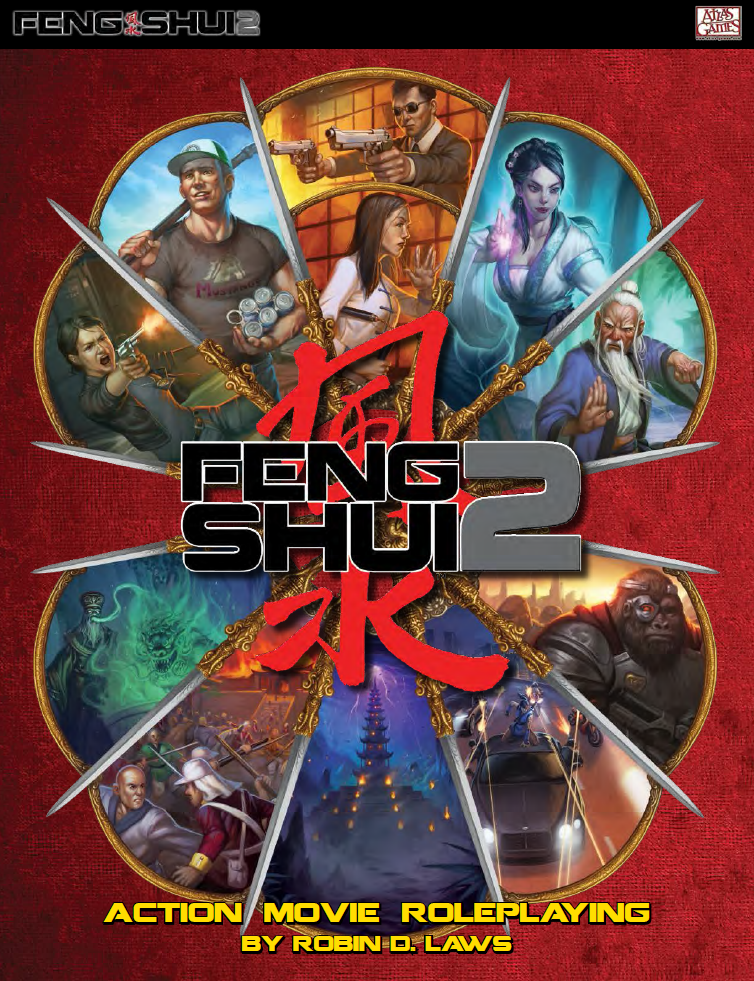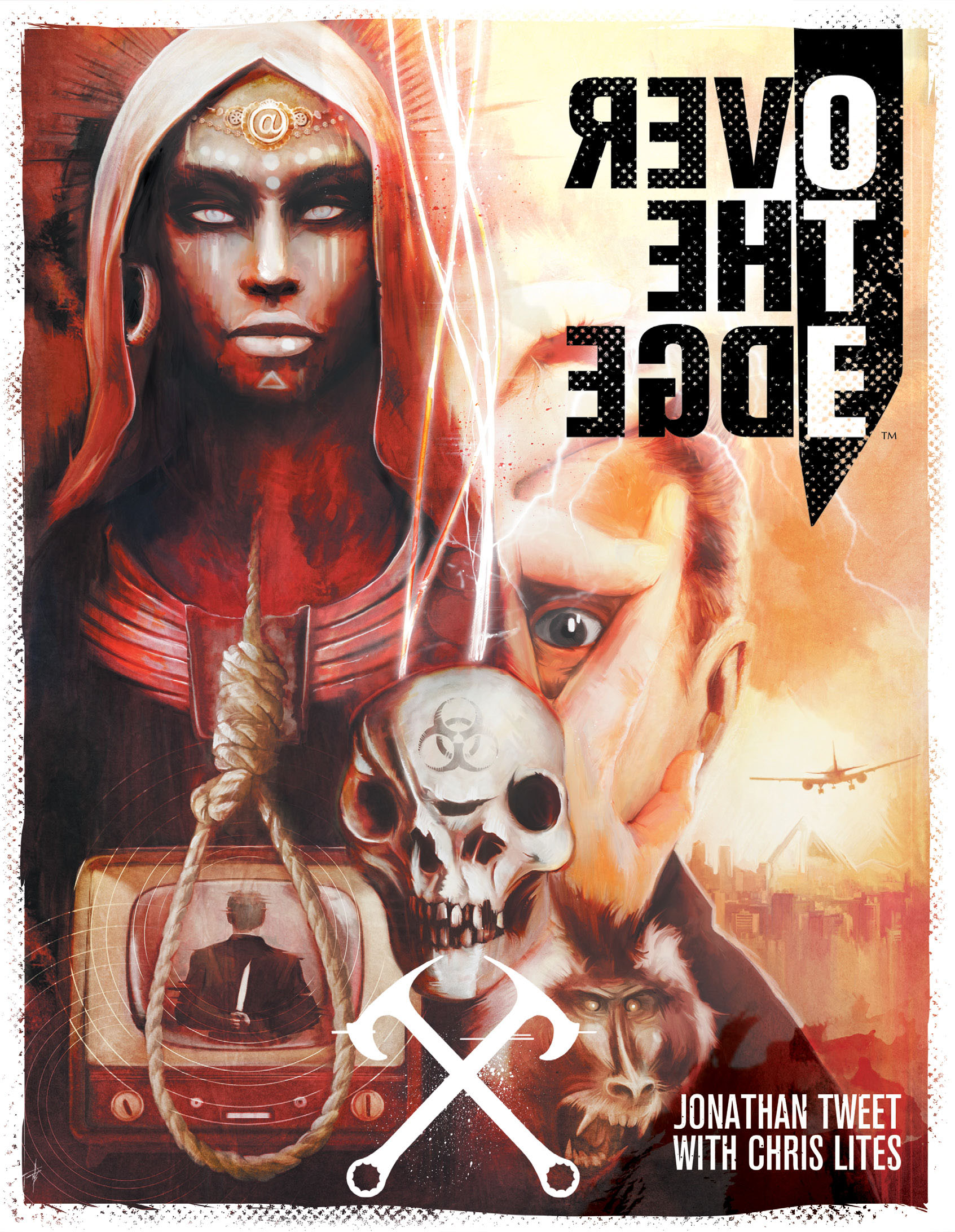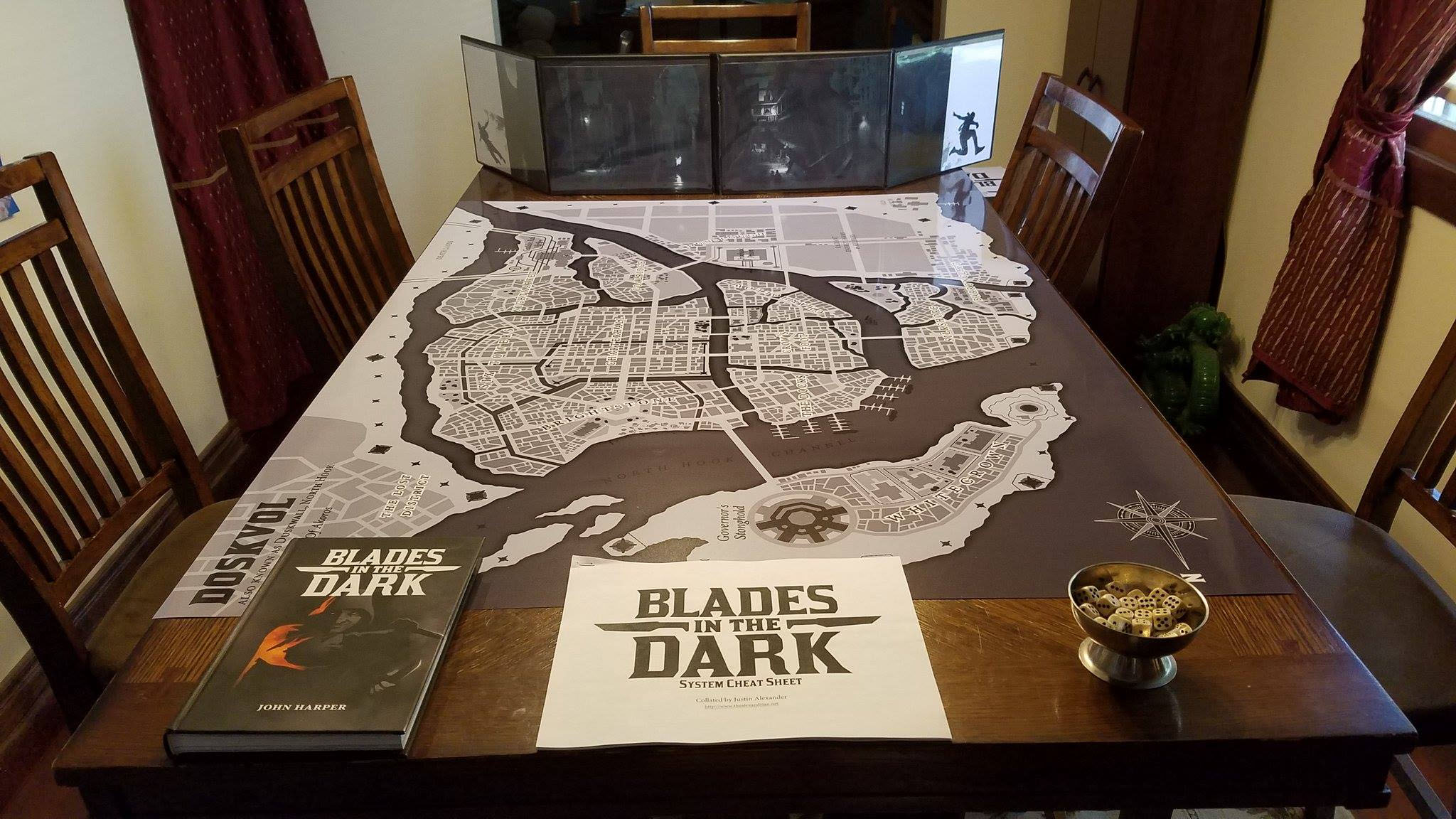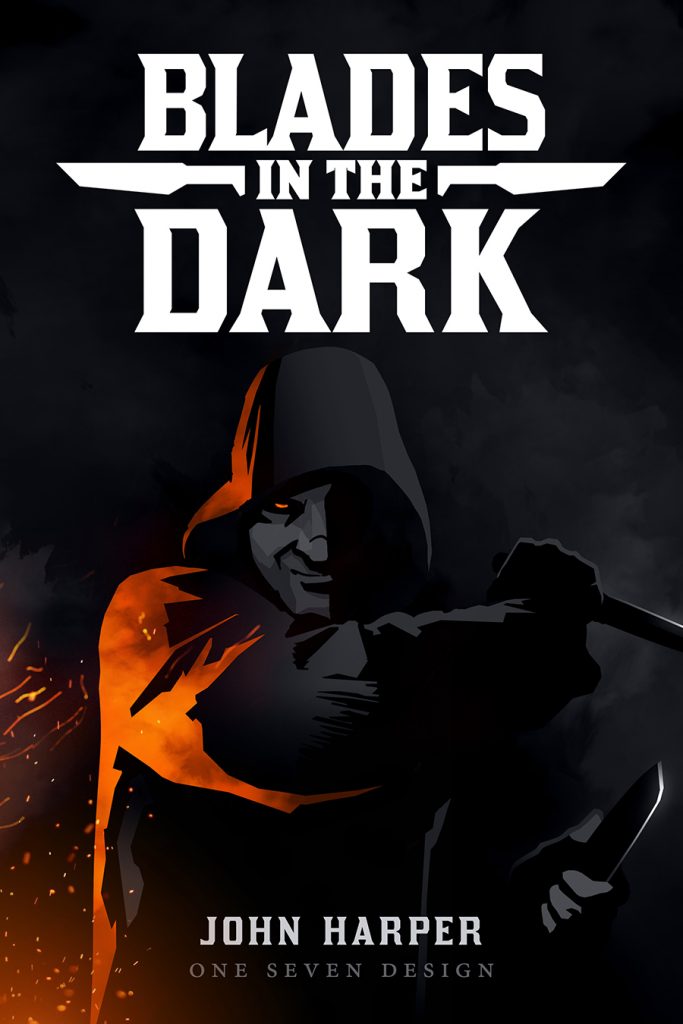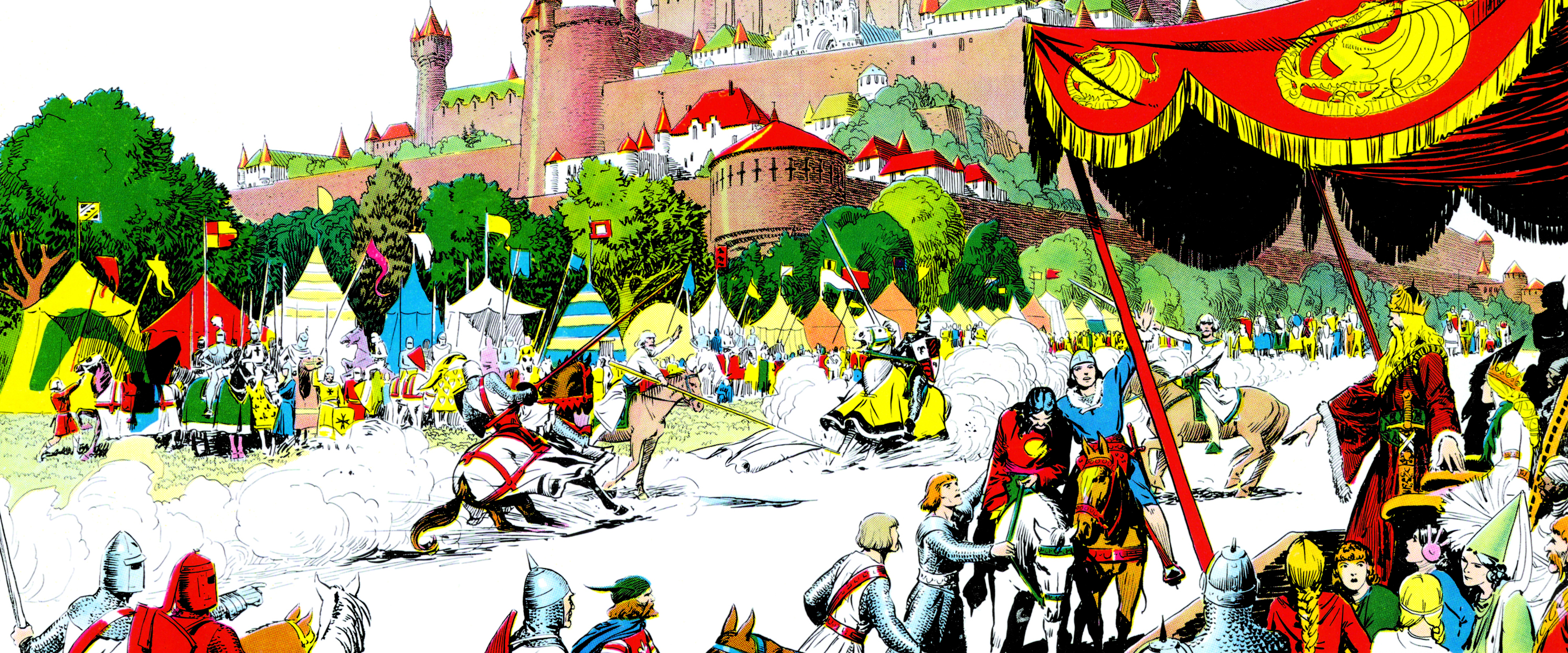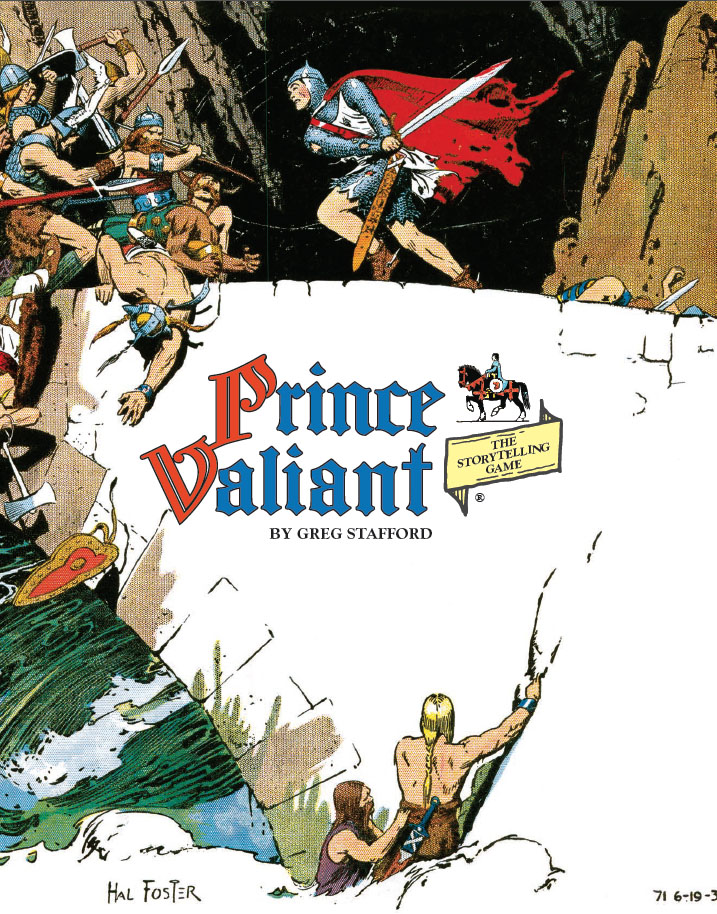When Robin D. Laws first designed Feng Shui, Jackie Chan, John Woo, and The Matrix had not yet brought the pulse-pounding action of Hong Kong cult cinema into the Hollywood mainstream.
I discovered the game way back in the summer of 1997: I had taken a hiatus from RPGs, but had maintained my subscription to Dragon magazine. That summer, I realized I hadn’t received an issue of Dragon for several months, and I went online — revisiting my old Usenet and FidoNet haunts — to figure out why. I quickly had my answer: TSR had gone bankrupt. But in the process, I was drawn back into discussions of RPGs. Two of them were burning up the discussion groups at the time: Heavy Gear and Feng Shui.
At the time, I was living with my dad in Mankato, MN. I biked from our apartment building down to a hobby store in “downtown” Mankato. The hobby store had exactly one magazine rack of RPG titles, but by some miracle it was well-stocked: I grabbed copies of both Heavy Gear and Feng Shui. This was a seminal moment in my life, as Heavy Gear would ultimately prove to be my doorway into the RPG industry. (A tale I’ve told elsewhere.) Feng Shui didn’t feature as prominently in my work, but it played a really important part in reigniting my passion for RPGs. It’s a truly great honor that I’m now it’s caretaker.
Back in 1997, however, Feng Shui also kindled my love for Hong Kong cinema. Using the bibliography Robin D. Laws had placed in the back of the book as a map, I spent the rest of my summer biking to Suncoast Video and picking up VHS copies of whatever films I could get my hands on. As such, Feng Shui 2, by necessity, can’t recapture the wonder of the original game for me: The original Feng Shui wasn’t just a really cool game; it was the gateway to an entire medium of film I had never seen before.
But Feng Shui 2 is still frickin’ awesome: The rip-roaring, time-leaping magic of the Chi War is just such an innately awesome premise for a game that just flipping through the book is enough to get me amped about playing.
Which, of course, brings me to a cheat sheet for the system.
WHAT’S NOT INCLUDED
These cheat sheets are not designed to be a quick start packet: They’re designed to be a comprehensive reference for someone who has read the rulebook and will probably prove woefully inadequate if you try to learn the game from them. (On the other hand, they can definitely assist experienced players who are teaching the game to new players.)
The cheat sheets also don’t include what I refer to as “character option chunks” (for reasons discussed here). In other words, you won’t find the rules for character creation here.
HOW I USE THEM
As I’ve described in the past, I keep a copy of the system cheat sheet behind my GM screen for quick reference and also provide copies for all of the players. Of course, I also keep at least one copy of the rulebook available, too. But my goal with the cheat sheets is to consolidate information and eliminate book look-ups: Finding something in a half dozen or so pages is a much faster process than paging through hundreds of pages in the rulebook.
The organization of information onto each page of the cheat sheet should, hopefully, be fairly intuitive. The actual sequencing of pages is mostly arbitrary.
Page 1 – Basic Mechanics: This includes the core dice mechanic, plus the difficulty table, an Action Value reference for when your need to improvise GMCs, and the mechanics for Fortune, Impairment, and Boosts.
Page 2 – Skills & Other Checks: These rules round out the basic mechanics.
Page 3-7 – Combat: The core combat experience is contained on a single page, with additional options and guidelines laid out over the subsequent pages.
Page 8 – Vehicles: Primarily the rules for chases.
Page 9 – Chi War: Rules for sorcery, supernatural creatures, transformed animals, mutants, and feng shui sites.
Page 10 – Enemies: A one-page quick reference for GMs looking to build fights and create stat blocks on-the-fly.
OTHER THINGS TO PRINT OUT
You might also want to print out copies of:
- GMC names (Feng Shui 2, p. 220-221)
- Vehicle Table (Feng Shui 2, p. 156)
And you don’t need to print it out, but before playing you might want to take a guided tour through the Select Filmography, updated with all the awesome flicks of the last 20+ years and still found tucked away tidily at the back of the book.
BLUE MOON RULES
One unusual piece of slang you’ll find here is “blue moon.” This is taken from the chapter “Blue Moon Rules” in Feng Shui 2, of which Laws writes:
This chapter gives you the rules for situation that come up only once in a blue moon. These edge cases and special situations may arise in your game once or twice.
I found this distinction remarkably valuable, and in preparing these cheat sheets I have greatly expanded the scope of the rules covered by the “blue moon” designation. Essentially, if you look at a section of the cheat sheet I have:
(a) Specified the core mechanics of a given topic; and
(b) Designated everything else as “blue moon.”
For example, there is a page titled “Combat.” In my opinion, everything you need to run combat encounters in Feng Shui 2 is located on that page. Then there’s another page labeled “Blue Moon: Combat.” That page contains a lot extra rules that you’ll use only to respond to very specific situations in combat. A third page is labeled “Blue Moon: Weapons,” and contains a bunch of weapons-specific rules that you can use to spice things up.
You can see a similar distinction on the page of the cheat sheet dealing with vehicle chases: The “Vehicles” section contains the core gameplay loop for chases; the “Blue Moon: Vehicles” section of the page contains a bunch of additional rules that can be injected into that core gameplay.
I actually find this distinction so conceptually useful in organizing and focusing the cheat sheet that I think you’ll likely see me using it again in the future with any number of other games.
MAKING A GM SCREEN
As with my other cheat sheets, the Prince Valiant sheets can also be used in conjunction with a modular, landscape-oriented GM screen (like the ones you can buy here or here).
Personally, I use a four-panel screen and use reverse-duplex printing in order to create sheets that I can tape together and “flip up” to reveal additional information behind them. This is the screen arrangement I’m currently experimenting with:
- Panel 1: Basic Mechanics (with Skills & Hazards behind it).
- Panel 2: Combat (with Blue Moon: Combat & Blue Moon: Weapons behind it).
- Panel 3: Vehicles (with Keeling Over & Vehicle Table behind it).
- Panel 4: Enemies (with Chi War & Hong Kong GMC Names behind it).
FURTHER READING
So You Want to Be a Feng Shui Player?
Feng Shui: Filling the Shot
Feng Shui: Using the Shot Counter
Prep Notes: Hong Kong Task Force 88




